The Ancient ‘Flying Machines’ Of Icarus and Daedalus
Ellen Lloyd – AncientPages.com - The legend of Icarus and Daedalus, written by the Roman poet Ovid in his work Metamorphoses, is today considered to be a colorful legend, a fiction story.
Is it merely a legend, or does this story tell of actual events?
Some who studied the peculiar legend suggest the story could, in fact, be a testimony of prehistoric aviation.
The Fall of Icarus (1635-7) by Jacob Peter Gowy (c 1615-1661). Credit: Public Domain
Daedalus was a very skilled architect and craftsman. He designed and built the Labyrinth, in which the Minotaur, a monstrous creature, was hidden. Satisfied with what he had accomplished, he wanted to return home, taking his son with him.
However, Daedalus knew that king Mimos would not allow him to leave and that he was shut in by sea. He had to devise an idea of how to flee from king Mimos and his men.
"The king may block my way by land or across the ocean, but the sky, surely, is open, and that is how we shall go, " he thought.
"With these words, he set his mind to sciences never explored before, and altered the laws of nature," according to Ovid.
There was a solution to the problem. They needed to fly to escape from the king and his men.
Daedalus needed to build a flying machine, which is exactly what he did. He constructed two aircraft, one for himself and the other for his son, Icarus. Daedalus gave his son lectures on how to operate the flying vehicle. After that the two of them began their sky travel. The people on the ground who saw these flying machines were astonished.
The author Ovid describes the scene as follows:
"Some fishermen, perhaps plying with his quivering rod, some shepherd leaning on his staff, or a peasant bent over his plow handle caught sight of them as they flew past and stood still in astonishment, believing that these creatures who could fly through the air must be gods."
The two pilots managed to leave Crete and continued their flight across the Aegean Sea, but the most unfortunate accident occurred.
For the young Icarus, the opportunity of being able to fly was such a thrilling experience that he forgot everything his father had told him before the trip.
Pieter Brueghel, Landscape with the Fall of Icarus (c. 1558). Credit: Public Domain
The young man soared higher and higher skywards. He then lost control over the aircraft and was "swallowed up in the deep blue waters, which are now called after him."
If Icarus had not been over-excited, he would not have crashed into the water and would probably have managed to fly all the way home.
Still, one can understand the young man's excitement. Only the gods were privileged to fly, and there he was, an ordinary human, high up in the air, looking down at all things on the ground. No wonder he wanted to get as much as possible out of this unusual experience.
"Among the credulous, the significance of the name of a people of Asia Minor, the Capnobates, 'those who travel by smoke,' gave rise to the assertion that Montgolfier was not first in the field--or instead in the air--since indeed this people must have been responsible for the first hot-air balloons.
Far less questionable is the legend of Icarus, for here, it is possible to trace a foundation of fact in the story.
Such a tribe as Daedalus governed could have had hardly any knowledge of the rudiments of science, and even their ruler, seeing how easy it is for birds to sustain themselves in the air, might be excused for believing that he, if he fashioned wings for himself, could use them.
In that belief, let it be assumed, Daedalus made his wings; the boy, Icarus, learning that his father had determined on an attempt at flight, secured the wings and fastened them to his shoulders. A cliff seemed the likeliest place for a 'take-off,' and Icarus leaped from the cliff edge only to find that possessing wings was not enough to assure flight to a human being.
How can we be sure that the story of Icarus and Daedalus is not just a fable? We have to remember that Daedalus was a master architect, capable of constructing many highly advanced things. When he built his flying machine, he knew exactly how to proceed and was fully aware of what could occur if something went wrong.
That was why he taught his son what he should and should not do.
Some scholars argue Daedalus's knowledge about the aircraft's limitations proves the story's authenticity and represents a perfect example of ancient aviation skills.
Updated on June 29, 2022
Written by - Ellen Lloyd – AncientPages.com
Copyright © AncientPages.com All rights reserved. This material may not be published, broadcast, rewritten or redistributed in whole or part without the express written permission of AncientPages.com
More From Ancient Pages
-
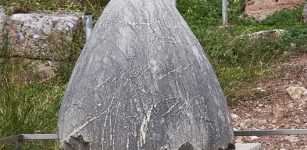 Omphalos – Mysterious Ancient Sacred Object And Its Meaning
Artifacts | May 24, 2017
Omphalos – Mysterious Ancient Sacred Object And Its Meaning
Artifacts | May 24, 2017 -
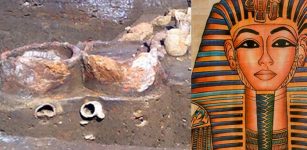 Recreation Of Cleopatra’s Ancient Perfume
Archaeology | Aug 26, 2019
Recreation Of Cleopatra’s Ancient Perfume
Archaeology | Aug 26, 2019 -
 Mysterious Disappearance of Scythians Still Remains Unsolved
Civilizations | Sep 6, 2015
Mysterious Disappearance of Scythians Still Remains Unsolved
Civilizations | Sep 6, 2015 -
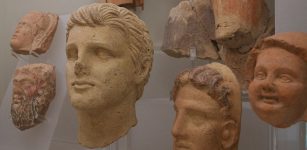 Intriguing Phenomenon Sheds New Light On The Etruscans
Archaeology | Sep 25, 2021
Intriguing Phenomenon Sheds New Light On The Etruscans
Archaeology | Sep 25, 2021 -
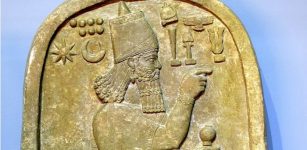 Stele Of Tell al-Rimah And Deeds Of Assyrian King Adad-nirari Against Rebellious Kings
Featured Stories | Feb 22, 2022
Stele Of Tell al-Rimah And Deeds Of Assyrian King Adad-nirari Against Rebellious Kings
Featured Stories | Feb 22, 2022 -
 Michael Scott – Fascinating Wizard Who Tutored The Holy Roman Emperor Frederick II
Featured Stories | Mar 7, 2025
Michael Scott – Fascinating Wizard Who Tutored The Holy Roman Emperor Frederick II
Featured Stories | Mar 7, 2025 -
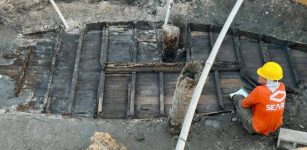 Remarkable Discovery Of A 19th-Century Boat Buried Under A Road In St. Augustine, Florida
Archaeology | Oct 16, 2023
Remarkable Discovery Of A 19th-Century Boat Buried Under A Road In St. Augustine, Florida
Archaeology | Oct 16, 2023 -
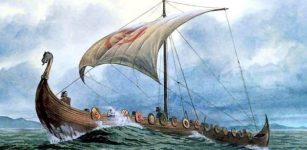 Long Serpent: Most Famous Viking Longship Of King Olav Tryggvason Of Norway And Its Fate
Featured Stories | Jun 7, 2017
Long Serpent: Most Famous Viking Longship Of King Olav Tryggvason Of Norway And Its Fate
Featured Stories | Jun 7, 2017 -
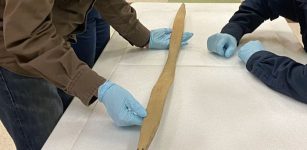 Still Intact 460-Year-Old Bow Found Underwater In Alaska Baffles Scientists – Where Did It Come From?
Archaeology | Mar 17, 2022
Still Intact 460-Year-Old Bow Found Underwater In Alaska Baffles Scientists – Where Did It Come From?
Archaeology | Mar 17, 2022 -
 Mystery Of The Lost Biblical Kadesh Where Moses Was Punished By God
Biblical Mysteries | Oct 17, 2017
Mystery Of The Lost Biblical Kadesh Where Moses Was Punished By God
Biblical Mysteries | Oct 17, 2017 -
 On This Day In History: Battle Of Visby, Gotland Was Fought – On July 27, 1361
News | Jul 27, 2016
On This Day In History: Battle Of Visby, Gotland Was Fought – On July 27, 1361
News | Jul 27, 2016 -
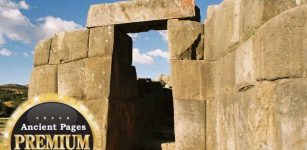 Sacsayhuamán – Was It Built By ‘Demons’ Or Viracocha The Bearded God?
Ancient Mysteries | Apr 10, 2014
Sacsayhuamán – Was It Built By ‘Demons’ Or Viracocha The Bearded God?
Ancient Mysteries | Apr 10, 2014 -
 Ancient Roman Wine Was Spicy And Smelled Like Toast – Dolia Vessels Reveal
Archaeology | Jan 25, 2024
Ancient Roman Wine Was Spicy And Smelled Like Toast – Dolia Vessels Reveal
Archaeology | Jan 25, 2024 -
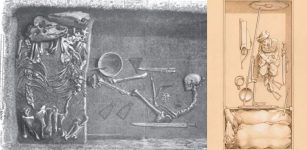 Birka Warrior Was A Woman – DNA Reveals
Archaeology | Feb 15, 2018
Birka Warrior Was A Woman – DNA Reveals
Archaeology | Feb 15, 2018 -
 Jason And The Argonauts – Hate, Sorcery, Love And Jealousy Reign In This Famous Greek Story
Featured Stories | Jan 6, 2022
Jason And The Argonauts – Hate, Sorcery, Love And Jealousy Reign In This Famous Greek Story
Featured Stories | Jan 6, 2022 -
 Neolithic Ceramics Reveal Dairy Processing From Milk Of Multiple Species
Archaeology | Mar 15, 2023
Neolithic Ceramics Reveal Dairy Processing From Milk Of Multiple Species
Archaeology | Mar 15, 2023 -
 Treasures From Ancient City Of Hippos-Sussita Displayed In Exhibition For The First Time
Archaeology | Jan 3, 2018
Treasures From Ancient City Of Hippos-Sussita Displayed In Exhibition For The First Time
Archaeology | Jan 3, 2018 -
 Edøy Discovery: Traces Of 1,000-Year-Old Ship Burial Detected In Norway
Archaeology | Nov 24, 2019
Edøy Discovery: Traces Of 1,000-Year-Old Ship Burial Detected In Norway
Archaeology | Nov 24, 2019 -
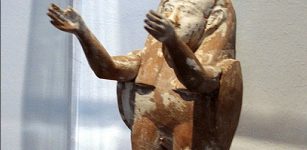 Ancient Beliefs About The Soul
Civilizations | Mar 8, 2016
Ancient Beliefs About The Soul
Civilizations | Mar 8, 2016 -
 Ceramics Are Telling The Story Of 14th Century Chinese Trade
News | Jun 28, 2023
Ceramics Are Telling The Story Of 14th Century Chinese Trade
News | Jun 28, 2023


